How to Make a Window Garden Grow
http://decor-ideas.org 07/22/2013 01:30 Decor Ideas
What's more quaint and charming than a window box filled with flowers? I love these boxes, but I admit it took me a while to include them in my gardening — probably because I was intimidated by their installation and didn't want to risk doing it incorrectly. But for any homeowner with decent DIY skills, this is a great weekend project, and for all others, a good carpenter or handyman can install these boxes in a snap — that just leaves the fun part of planting to you.
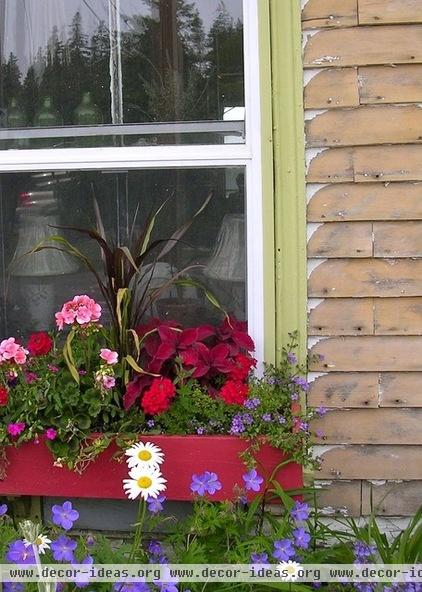
Materials. Any number of materials are appropriate for window boxes. Ready-made or custom boxes can be fashioned of wood, metal, ironwork or plastic and can be created to match the trim or shutters on your window or contrast to form a more colorful feature. Some of the plastic ones can even be painted any color you like, so you get the look of a colorful wooden box with the durability of plastic.
Window boxes are available at most nurseries, garden centers, home improvement stores and even some hardware stores. Many online companies also will construct custom boxes for you. It's also worth looking into hiring a reputable carpenter to create boxes according to your specifications, taking all the anxiety out of doing it yourself if you're not comfortable with your level of skill.
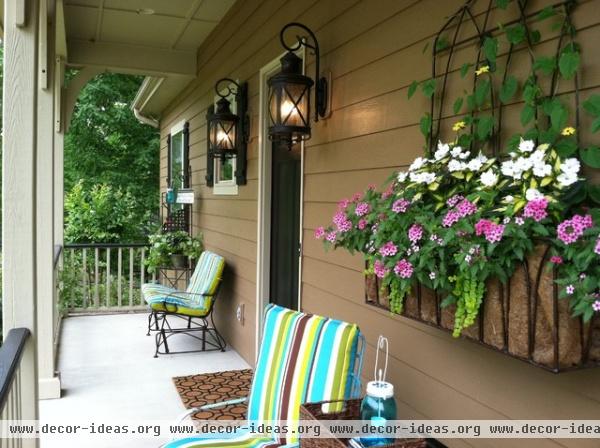
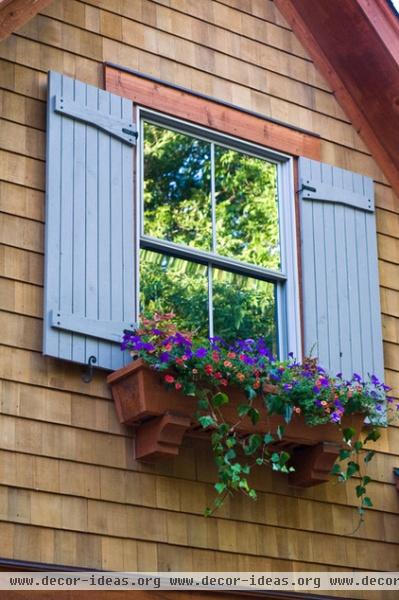
Location. Obviously, window boxes go underneath windows, but are there any other guidelines? As it turns out, yes.
Take a look at your house from across the street, making note of the windows on your house. While it's not necessary or even attractive to add window boxes to each and every window, it makes less sense to choose one random window to trim out with a box. Instead, choose feature windows, like the ones on either side of your entryway or the row of windows by your living room. Second-story window boxes are a dramatic addition, but be sure you can open that window; otherwise you will have no access for watering or other maintenance.
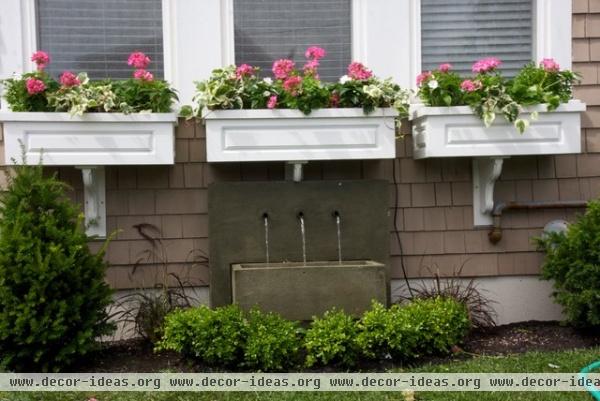
Drainage. Most window boxes have drainage holes with trays underneath the box to help your plants stay healthy. Openwork iron or metal boxes, however, are often lined with cocoa liners that tend to drain a bit too freely, leaving plants thirsty. To counteract this, line the inside of the cocoa liners with perforated plastic — I've used trash bags cut to fit, with holes poked into them so they don't get waterlogged, which would create the opposite problem.
Wooden boxes can be painted on the inside with a waterproof roofing cement that keeps the wood from rotting prematurely. You will still want to have drainage holes drilled in the bottom, but this procedure will prolong the life of your box.
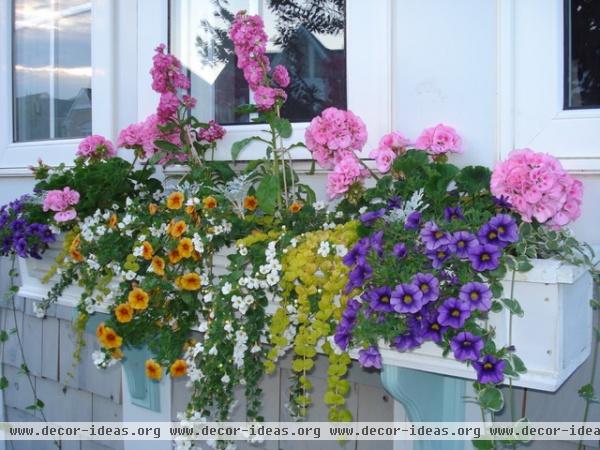
Plants to use. Many small flowering plants that grow in the ground or are appropriate for container plantings will work in a window box. You can take advantage of the elevation of window boxes by adding plants that have a trailing habit — ivies, petunias, lobelias, impatiens, sweet potato vines — but don't forget vertical plants to balance things out. Geraniums, marigolds, tiny evergreen topiaries, low-growing ornamental grasses and even miniature roses can be tucked in to add a bit of height and keep things interesting. Be sure to use plants that do not grow taller than one-third the height of your window, or they will appear overgrown and imposing rather than charming.
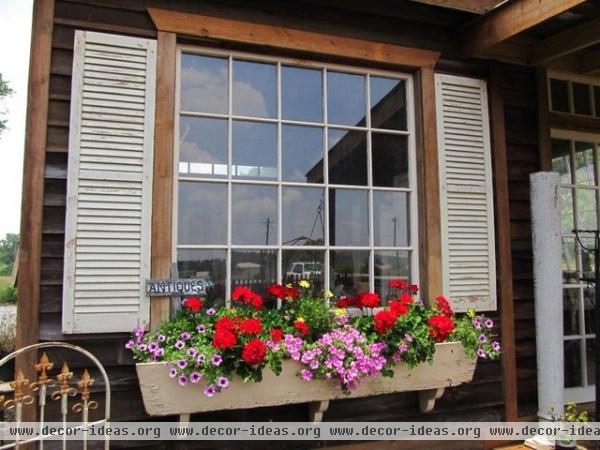
Installation. There are several ways to install a window box. Many have L-shaped brackets for support, which are attached to wood wall studs underneath the windowsill. If it appears necessary to attach brackets to brickwork or stucco, make sure you use a drill bit that is designated for masonry, or it will break off. Once the brackets are installed, set the window box on top and secure it in place with decking screws.
If you are purchasing ready-made window boxes, be sure that you center them beneath your window. Purchased boxes should be the width of the window and the trim, or if your window has shutters, the width of your window plus 4 to 6 inches. Anything smaller will appear undersize and out of proportion. A standard window box is typically about 8 inches deep, but custom boxes can be any depth you desire, as long as it's in proportion to your window.
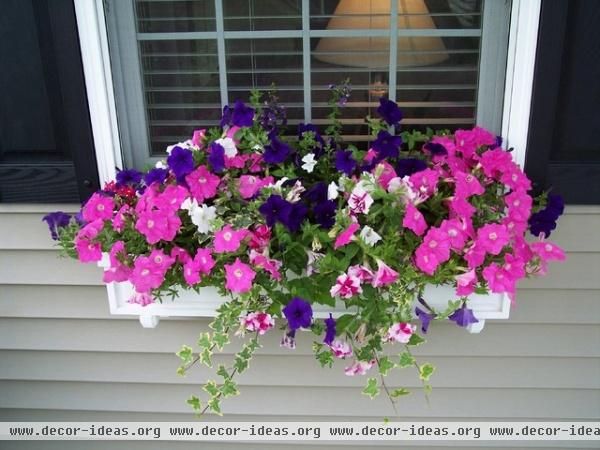
Planting tips. Make sure your window boxes are installed before planting them, as they will be too heavy once planted to move into place and secure to the brackets. Use a good-quality potting soil or bagged garden soil, then add some slow-release fertilizers that will feed your plants a small amount every time they are watered. If you are using more arid plants like cacti or succulents, be sure to use a soil that is formulated for those types of plants to allow them to drain better.
I like to really pack a lot of plants into window boxes, especially if I'm using flowering annuals. Annuals look good only for that growing season, so I don't like to wait months for them to fill in. Using six-packs of color, 4-inch pots or 1-gallon containers is usually the best option, as anything bigger will likely be too large for the box.
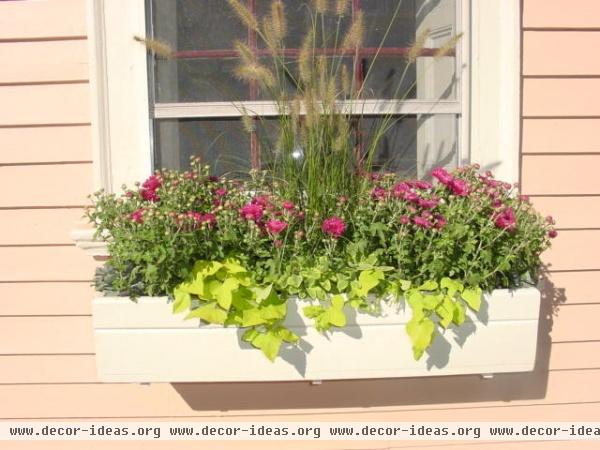
Watering and fertilizing. Your watering schedule will depend upon the type of plant material you use (thirsty impatiens will need daily watering; succulents will need less, for example) and the sun exposure that your boxes receive. The more sun your window boxes get, the quicker they will dry out and need to be watered. In general, most plants in window boxes need to be watered several times a week — you can use your hose-end sprinkler for lower window boxes, watering cans for boxes on second stories and drip irrigation for boxes on any level. There are also some self-watering boxes that, once watered, store water in the bottom of the box so your plants can be irrigated for up to two weeks — great for busy people or for when you are away on vacation.
You should also fertilize according to the type of plants you have, but using a water-soluble fertilizer once or twice a month is a good general rule of thumb to keep things lush, green and flowering.
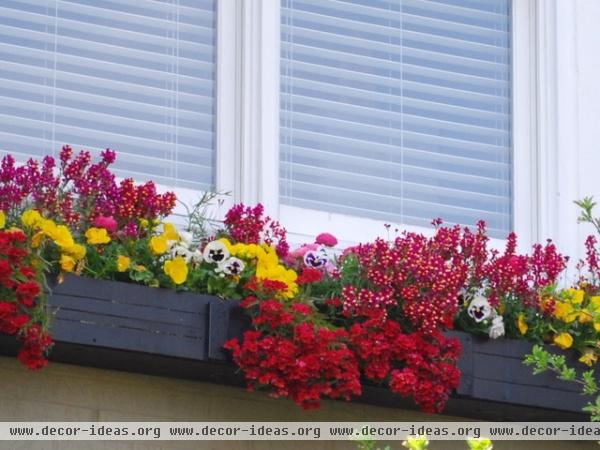
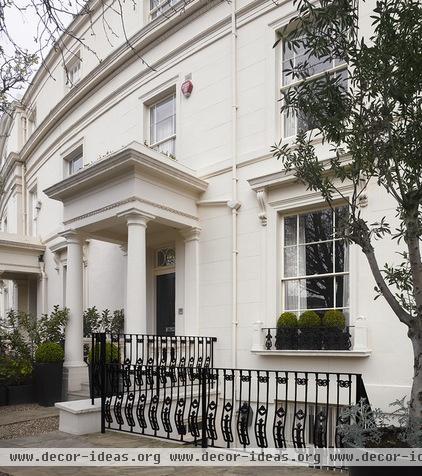
Style. Window boxes have a reputation for being casually charming, lending themselves naturally to cottage style. But the truth is, depending upon the style of your box material and the plants that you add to them, your window boxes can look elegant, formal, sleek or contemporary.
Painted wooden boxes with a jumble of colorful annuals tend to look more casual and traditional, while black ironwork boxes with stately evergreens and white flowers and ivy appear more formal. Create a contemporary look with neutral wood boxes planted identically with low-growing ornamental grasses or small cacti. Start with the style of your house and let that dictate your window box decisions.
Next: See how to make a basic window box
Related Articles Recommended












